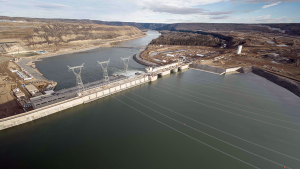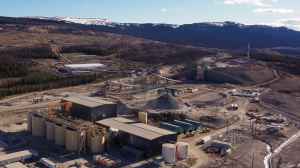Although pre-fab construction is known mostly for building houses, offices and recreation facilities, there are other more outside-the-box applications for the building method.
It has also been used to build bridges as well as water and wastewater treatment plants, for example.
Bridge components and systems can be built off-site and then transported to and assembled at the construction site.
Modular water and wastewater treatment plants can be used in small, decentralized residential, commercial, agricultural, industrial and municipal treatment systems.
Decentralized treatment systems, many of which are found in small towns and rural areas, place the treatment facility near the source of supply, consumption or both.
They are smaller and more flexible than the large, centralized treatment plants in major cities that require complex and costly supply and delivery infrastructure.
Modular water treatment systems are becoming popular because they are easy to install, require little operational oversight and they’re scalable.
A B.C. manufacturer of the systems said they also save time and money.
The village of Coal Harbour on Vancouver Island has modular treatment plants.
Coal Harbour is both tiny, population approximately 200, and remote as its 500 kilometres and a seven-hour drive north of Victoria along winding roads that can be treacherous in winter.
“We have a two-train (module) unit for water treatment, and a one-module unit for waste-water,” said Paul Getman, Coal Harbour’s water and wastewater systems operator.
The water plant, which was installed in 2005, is located two-and-a-half kilometres from the village water storage reservoir. The raw water comes from nearby Quatse Lake.
“The raw water has a high level of tannins in it,” said Getman. “The treatment plant cleans up the tannins and then the water is chlorinated.”
The wastewater treatment plant is located at the end of Coal Harbor and was installed in 2018.
Both water and wastewater treatment plants use a process called dissolved air flotation (DAF), which clarifies water by removing suspended matter, such as oil and solids.
The unwanted materials are removed by dissolving air under pressure in the water and then releasing the air at atmospheric pressure in a flotation tank basin.
The released air forms tiny bubbles that stick to the suspended matter, which causes the suspended matter to float to the surface of the water where it can then be removed by a skimming device.
“An important benefit of DAF modules for little communities like Coal Harbour is that they occupy a smaller footprint than a conventional treatment plant,” said Getman.
Coal Harbour’s modular water and wastewater treatment plants were designed and made by AWC Water Solutions Ltd. of Langley, B.C.
AWC business development manager Ryan Harvey said the company assembles the modules in its 60,000-square-foot facility in suburban Vancouver.
“We do as much of the work off-site in our fabrication plant as long as the components and the finished plant can fit inside the shop,” said Harvey.
The average treatment module is eight to 10 feet wide, 10 feet tall and 35 feet long.
“The largest module is no more than 14 feet wide, 14 feet tall and 60 feet long,” said Harvey. “One treatment plant might contain up to five modules.”
Most of AWC’s water and wastewater treatment plants are shipped by truck from the factory to destinations across North America.
They are assembled and installed at the other end by a contractor hired by the customer.
Harvey said there is a growing demand for AWC’s modular treatment systems.
“There is a big push for decentralizing water and wastewater treatment facilities in rural areas,” said Harvey. “It’s due to a combination of small communities getting bigger and infrastructure getting old.”
Despite British Columbia’s abundance of water and wilderness, the province is reported to have the highest rate of water-borne illness in Canada.
More than 10 per cent of the drinking water supply systems are on long-term water quality advisories or boil-water notices.
Most of these systems are small operations that serve no more than 500 people.
According to the B.C. government, there are over 4,000 small water systems in the province.
Although they are required to provide the same quality of water as large systems, they face many challenges.
For example, some of them have trouble attracting and retaining trained and certified operators.
Or they have difficulty accessing laboratory services to test water samples for E. coli and coliform bacteria.
And many don’t have the money to pay for upgrading their infrastructure.











Recent Comments